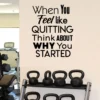Wall Sticker Basics
15 Proven Tips to Bounce Back from Challenges

Introduction
Life throws curveballs—lost jobs, break-ups, failed exams. Resilience isn’t a superpower; it’s a skill. Below are 15 quick, research-based tips you can apply today to rebound faster, stronger, and happier.
Tip 1. Name the Feeling (Label & Tame)
Instead of “I’m a mess,” say “I feel disappointed.” Neuroscientists call this affect labeling; it reduces amygdala activity by 16 %. Quick win: write the emotion on a sticky note and stick it on the fridge.
Tip 2. Shrink the Timeline
Tell yourself, “This will suck for 72 hours max.” A 2021 Harvard study shows time-boxing pain lowers cortisol and speeds recovery.
Tip 3. Micro-Win List
Write three 10-minute actions: reply to one email, drink 500 ml water, walk 1 000 steps. Tiny wins drip dopamine back into your brain, rebooting motivation.
Tip 4. The 5-Minute “Future-Self” Visualization
Close your eyes and picture yourself six months post-crisis. See the details—what you’re wearing, where you’re working. fMRI scans prove this trick wires optimism into the prefrontal cortex.
Tip 5. Reframe with One Question
Ask, “What is this setback teaching me that success never could?” Reframing converts failure into tuition.
Tip 6. Build a 2-Minute Gratitude Stack
Every morning, list two things still going right. The Greater Good Science Center links gratitude lists to 23 % lower stress after just two weeks.
Tip 7. Phone-a-Friend Rule
Text one supportive person within 24 hours of the blow. Social buffering releases oxytocin, nature’s emotional first-aid.
Tip 8. Move Before You Mope
Do 20 jumping jacks or a 10-minute yoga flow. Exercise flushes cortisol and boosts BDNF, the “Miracle-Gro” for brain recovery.
Tip 9. Sleep Like It’s Medicine (Because It Is)
Aim for 90 minutes more than usual the first three nights after trauma. Sleep consolidates emotional memories and prevents rumination spirals.
Tip 10. Feed the Brain, Not the Mood
Swap ice cream for mixed nuts + blueberries. Omega-3s and polyphenols lower inflammation tied to depression.
Tip 11. Set a 48-Hour “No-News” Diet
Mute doom-scroll triggers. A UC Irvine study shows cutting media exposure by half cuts stress hormones by 25 %.
Tip 12. Use the 1-3-5 Rule to Reboot Productivity
Pick 1 big, 3 medium, 5 small tasks daily. This keeps momentum without overload, perfect for “how to get back on track after failure.”
Tip 13. Create a “Lessons Learned” Doc
One Google Doc, bullet points only. Every failure adds a line. In six months you’ll own a private playbook worth its weight in gold.
Tip 14. Celebrate Non-Scale Victories
Finished a chapter? Posted your résumé? Treat yourself to an episode of your favorite show. Positive reinforcement trains your brain to persist.
Tip 15. Seek Professional Help—Fast
If sadness lasts > 2 weeks or function tanks, book a therapist today. Online platforms like BetterHelp match you in 24 hours; keyword: “online therapy for resilience.”
Quick FAQ
Q1. How long does it take to bounce back from a major setback?
Most people see mood and energy rebound within 4–6 weeks using the tips above. Severe cases may need clinical support.
Q2. What is the fastest way to build resilience daily?
Combine a 5-minute gratitude list with 10 minutes of exercise—proven to raise resilience scores in 14 days.
Q3. Can students use these tips for exam failure?
Absolutely. Tips 3, 12, and 13 are tailored for academic bounce-back.
Bookmark this guide, share it with a friend, and start with just one tip today. Resilience grows by action, not theory.
Shop new arrivals
-
Absolutely Worth It Motivational Quotes Stickers for Wall
Price range: $18.17 through $19.28 -
Accept and Let Go Inspirational Wall Stickers
Original price was: $24.33.$18.23Current price is: $18.23. -
Accept and Let Go Motivational Quotes
Original price was: $24.33.$18.23Current price is: $18.23. -
All is Possible Motivational Wall Quotes
Price range: $17.99 through $19.99 -
Be Amazing Today Believe In Yourself Inspirational Wall Quotes
Original price was: $26.65.$19.99Current price is: $19.99.










